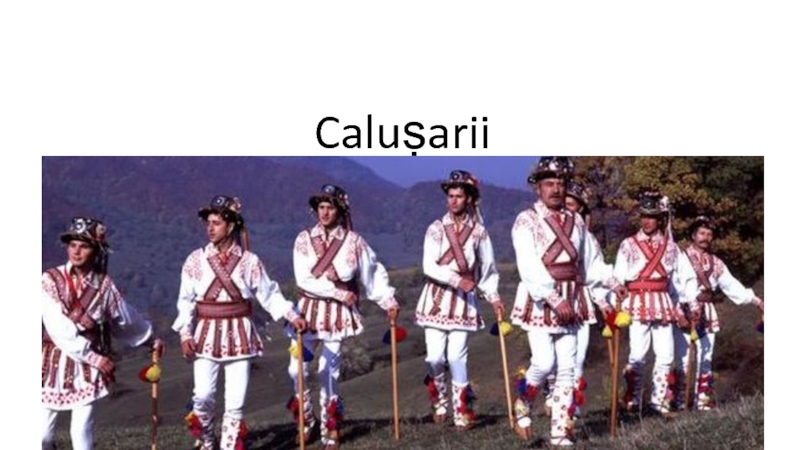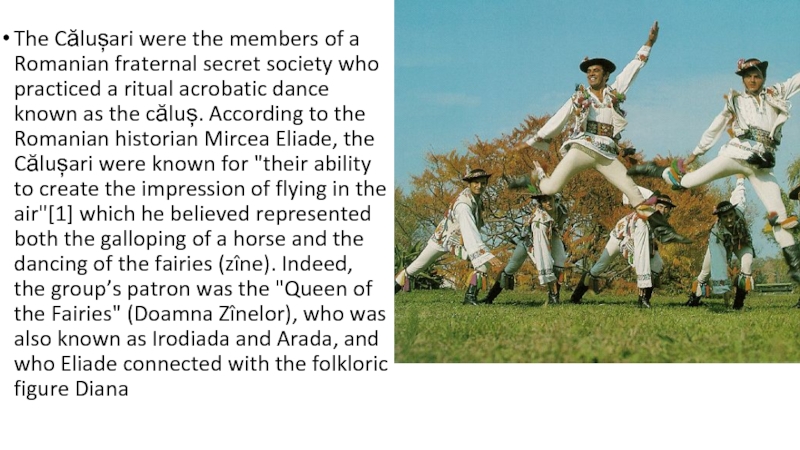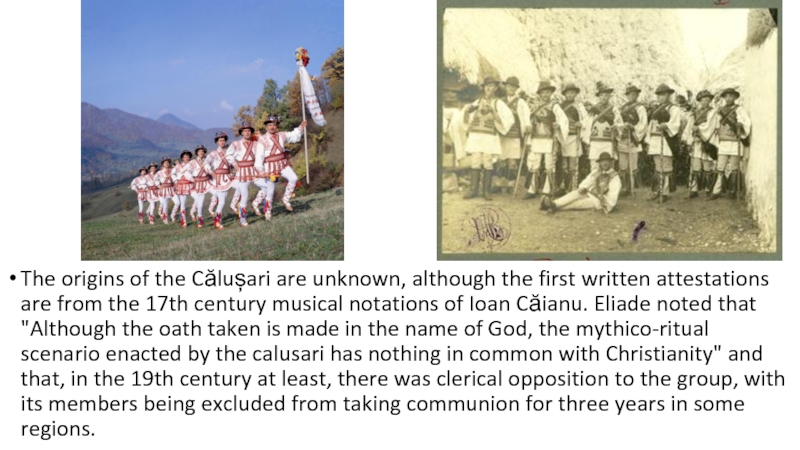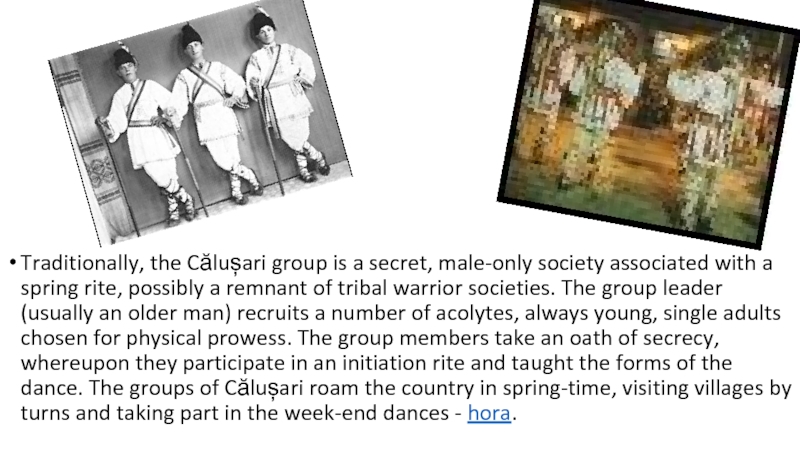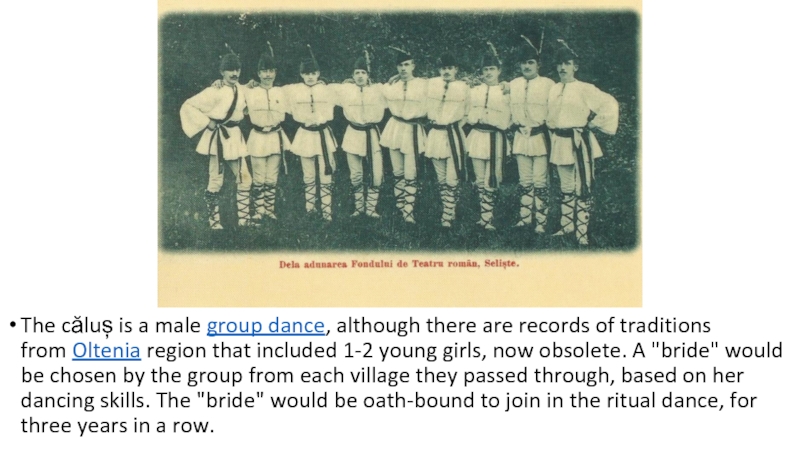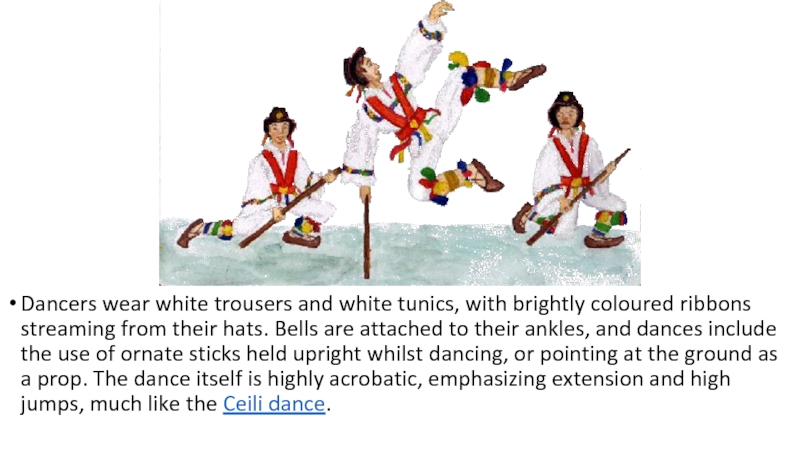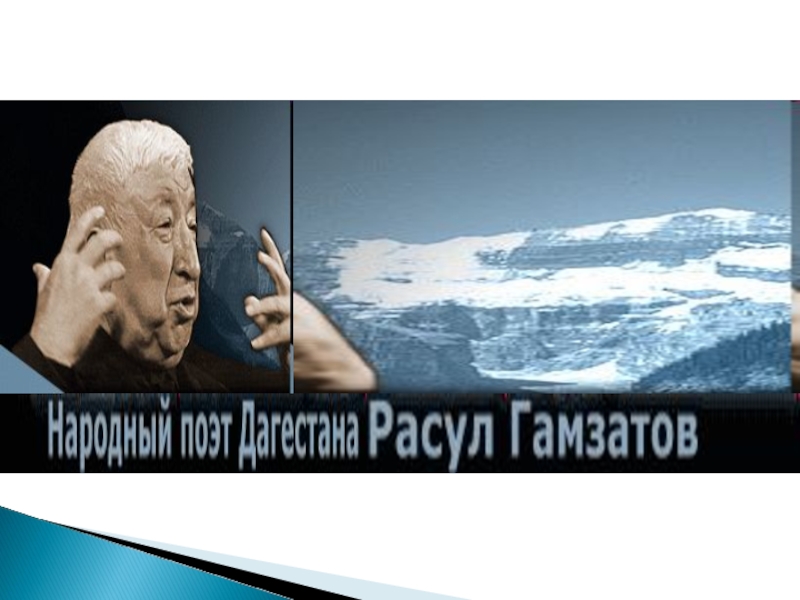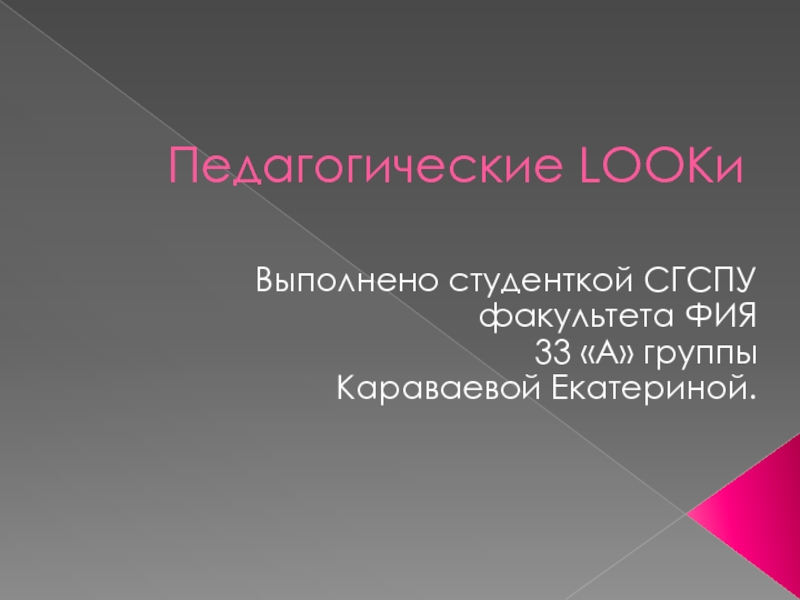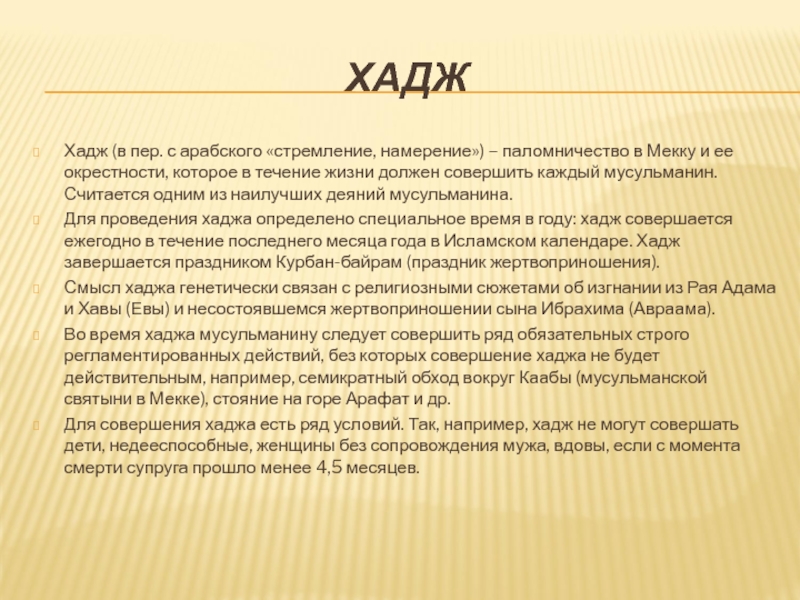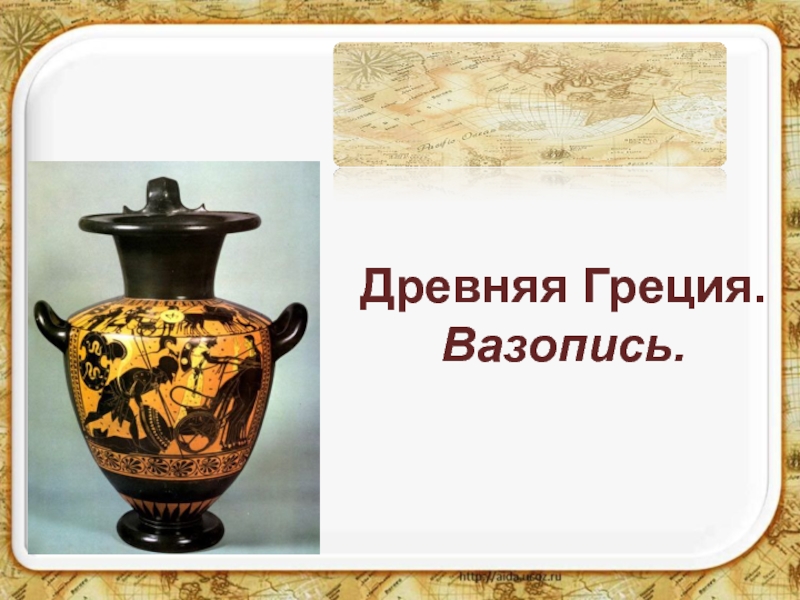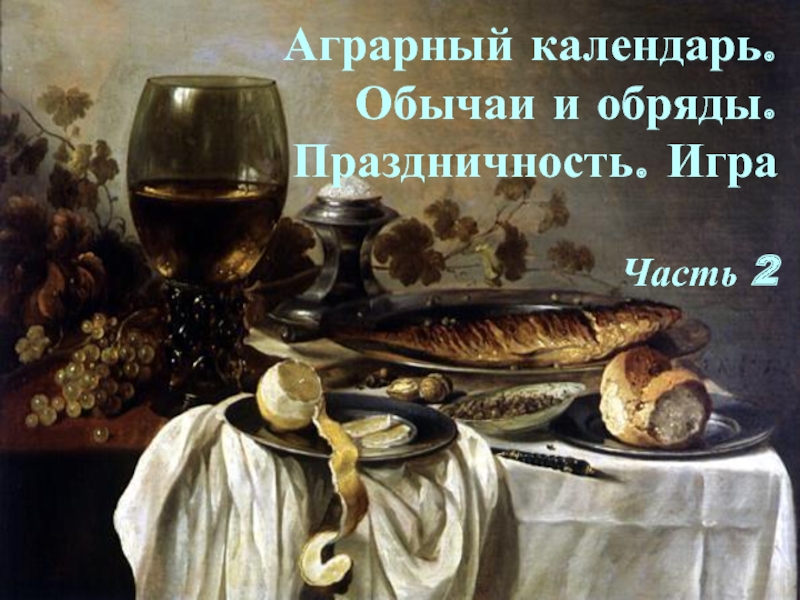- Главная
- Разное
- Дизайн
- Бизнес и предпринимательство
- Аналитика
- Образование
- Развлечения
- Красота и здоровье
- Финансы
- Государство
- Путешествия
- Спорт
- Недвижимость
- Армия
- Графика
- Культурология
- Еда и кулинария
- Лингвистика
- Английский язык
- Астрономия
- Алгебра
- Биология
- География
- Детские презентации
- Информатика
- История
- Литература
- Маркетинг
- Математика
- Медицина
- Менеджмент
- Музыка
- МХК
- Немецкий язык
- ОБЖ
- Обществознание
- Окружающий мир
- Педагогика
- Русский язык
- Технология
- Физика
- Философия
- Химия
- Шаблоны, картинки для презентаций
- Экология
- Экономика
- Юриспруденция
Calușarii презентация
Содержание
Слайд 2The Călușari were the members of a Romanian fraternal secret society
who practiced a ritual acrobatic dance known as the căluș. According to the Romanian historian Mircea Eliade, the Călușari were known for "their ability to create the impression of flying in the air"[1] which he believed represented both the galloping of a horse and the dancing of the fairies (zîne). Indeed, the group’s patron was the "Queen of the Fairies" (Doamna Zînelor), who was also known as Irodiada and Arada, and who Eliade connected with the folkloric figure Diana
Слайд 3The origins of the Călușari are unknown, although the first written
attestations are from the 17th century musical notations of Ioan Căianu. Eliade noted that "Although the oath taken is made in the name of God, the mythico-ritual scenario enacted by the calusari has nothing in common with Christianity" and that, in the 19th century at least, there was clerical opposition to the group, with its members being excluded from taking communion for three years in some regions.
Слайд 4Traditionally, the Călușari group is a secret, male-only society associated with
a spring rite, possibly a remnant of tribal warrior societies. The group leader (usually an older man) recruits a number of acolytes, always young, single adults chosen for physical prowess. The group members take an oath of secrecy, whereupon they participate in an initiation rite and taught the forms of the dance. The groups of Călușari roam the country in spring-time, visiting villages by turns and taking part in the week-end dances - hora.
Слайд 5The căluș is a male group dance, although there are records of
traditions from Oltenia region that included 1-2 young girls, now obsolete. A "bride" would be chosen by the group from each village they passed through, based on her dancing skills. The "bride" would be oath-bound to join in the ritual dance, for three years in a row.
Слайд 6Dancers wear white trousers and white tunics, with brightly coloured ribbons
streaming from their hats. Bells are attached to their ankles, and dances include the use of ornate sticks held upright whilst dancing, or pointing at the ground as a prop. The dance itself is highly acrobatic, emphasizing extension and high jumps, much like the Ceili dance.
